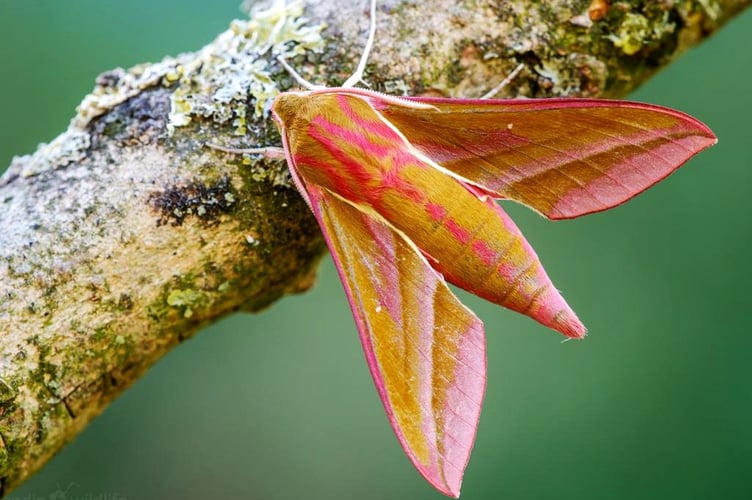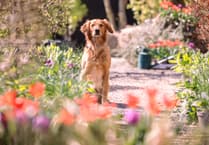Reader Richard Collinson has emailed his photo of a huge caterpillar he discovered in his garden; the biggest he’s ever seen. He said: “I was doing weeding when I spotted four large eyes staring back at me. It had very smooth and shiny skin, with vibrant and glossy colouration; more like a short fat snake than a caterpillar!”
Richard said he looked it up online and discovered it was the caterpillar of the Elephant Hawk-Moth. He explained: “The four ‘eyes’ were the clue, but these are of course not real eyes but markings that resemble eyes, presumably to put any would-be predator off the idea of eating it.”
The caterpillar usually measure a whopping 85mm (3½ inches). Apart from its “eyes”, it looks rather like an elephant’s trunk, hence the name “Elephant Hawk-Moth”.
Richard added: “It seems it is not particularly rare in the UK, though I have certainly never seen one before. The RHS website says they can be seen in gardens, often on fuchsias, which I don’t have. After photographing it I put back where I found it. Maybe I will be lucky enough to see a spectacular moth next year.”
The Elephant Hawk-Moth is beautiful with gold-and-pink markings and quite large, with a wingspan up to 60mm (about 2¼ inches).

It rests by day and starts flying at dusk, from May to August. According to the Butterfly Conservation charity’s website, it lives in a variety of habitats, such as rough grassland, waste ground and clearings, hedgerows, heathland, sand dunes, woodland and gardens.
If you spot one, please let me know by email: [email protected]
A helping hand for nature-loving community groups
Surrey Wildlife Trust (SWT) is lending a hand to community groups by lending “Wildlife Recording Kits”, free of charge, so they can discover what wildlife might be making its home on the ground they manage or work on.
SWT says a one-third of local species are in trouble and the kits are part of its mission to encourage more people to take action to protect and provide homes for native plants and animals.
The kits can help to identify what wildlife is present, enabling community to make decisions that benefit nature. Actions could include putting up signage to encourage people not to walk on wildflowers, installing bird feeders with suitable food for a particular species, installing bat boxes, planting hedgerows to support butterflies and moths, or creating ponds for newts.
The kits are available via the “Libraries of Things” at Guildford and Godalming libraries, and directly from the trust’s head office in Pirbright. They can be reserved for one or two weeks at a time.
The equipment available includes kits for bat detection, pond dipping and minibeasts. A small mammals kit includes footprint tunnels and plates, while a soil kit has a corer and tester kit to establish soil chemistry.
A trail camera kit is also available. This can be set up to record badgers, foxes, hedgehogs, birds, mice and other creatures that might visit when you are not present.
For bookings and the equipment hire agreement see online at surreywildlifetrust.org/wildlife-recording-kits
SWT runs courses that enable people to learn more about species and habitats in Surrey. For details visit surreywildlifetrust.org/whatson. It also offers a limited number of free places to Surrey-based community groups through its “Wilder Communities” programme: see surreywildlifetrust.org/get-involved.





Comments
This article has no comments yet. Be the first to leave a comment.